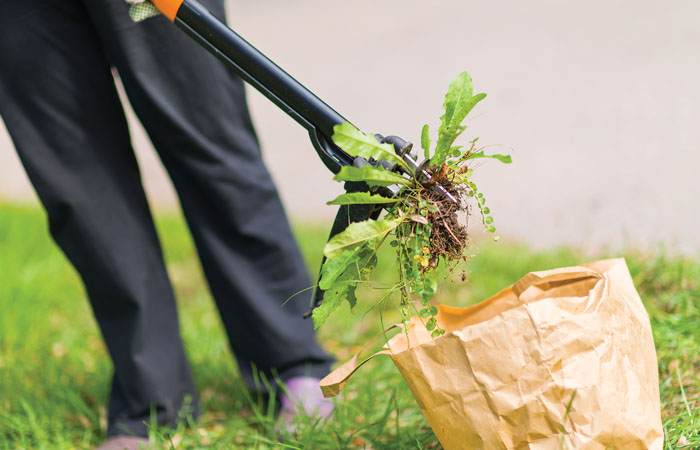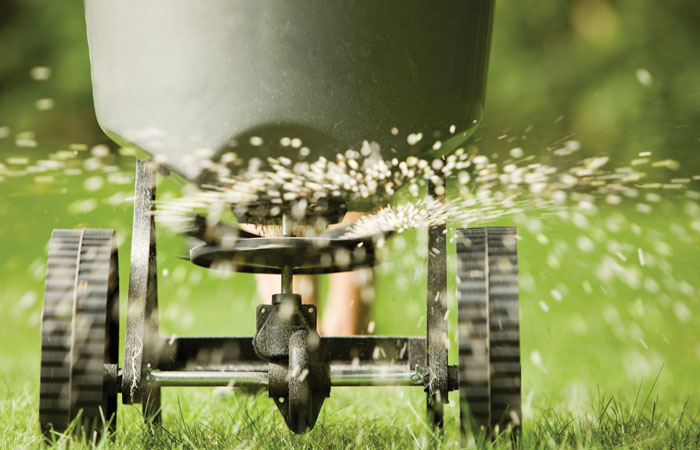It’s still winter, but spring is right around the corner and spring is when we get the most questions and comments about turf. Usually, the first and most passionate questions evolve around turf and weed control, especially home lawns. Every turf-focused member and homeowner wants to know, “How do I control the weeds in my lawn?” This month we will answer this most ardent of questions and set you on the path to a better home lawn.
First Things First
It is important to know what type of turf grass you have in your lawn before you start developing a weed-control program. Common turf grass types in North Texas include Bermuda grass, Zoysia grass, Saint Augustine, centipede grass and Fescue, to name a few. Each type of grass has different light, soil and fertility requirements, as well as growth and environmental factors, so knowing that you have picked the best-suited grass for your lawn’s environment is important. Healthy turf is the first step in controlling invasive weeds, as the base turf can suppress many weeds before they can establish themselves in the sward (turf stand). Assuming that you have the right grass in place, we will move on to defining what a weed is and how to control weeds, which will eventually challenge your desire for a beautiful lawn.
What is a Weed?
What exactly is a weed anyway? For our purposes, today we will define a weed as a plant growing where it is not wanted and in competition with desired/cultivated plants. Essentially, any plant that is growing where it is not wanted is a weed; so Bermuda grass growing in a Saint Augustine lawn is considered a weed. In terms of lawn or turf weeds, they come in two basic groups: winter or cool-season weeds (henbit, chickweed and Poa annua, or common meadow grass to our friends from the UK) and summer or warm-season weeds (goose grass, crabgrass and nutsedge). These weeds begin to germinate at different times of the yea: the cool-season grasses in late summer early September through October; and the warm-season grasses from mid-February through May. There are two basic approaches to weed control: physical and chemical. Physical weed control is pretty simple … you literally remove the weed physically. This is often impractical depending on the number and establishment of the weed population. Chemical weed control is achieved through the use of herbicides (an agent, usually chemical, used to kill plants). Herbicides also come in two primary groups: pre-emergent and post-emergent herbicides. Pre-emergent herbicides are applied BEFORE the weed plant germinates, killing the plant just after seed germination before a root can establish in the soil. Post-emergent herbicide is applied to existing weeds and often require direct contact to be effective. There are a few pre-emergent herbicides that have some post-emergent characteristics, but basically you will make the choice of herbicide based on the time germination of the weed. Post-emergent herbicides also can be selective (kill certain plants, but will not harm others) and non-selective (will kill or damage most plants that contact the product).

Timing is Everything
It is critical that a pre-emergent herbicide be applied properly and at the right time of year to be truly effective. So now is the time to apply pre-emergent to control summer or warm-season weeds, starting in February. We will not go into all the factors that affect weed seed germination; just know that pre-emergents are most effective if they are applied before the weed seed germinates. In fact, pre-emergent herbicides prevent the germination of weed seeds by inhibiting a key enzyme and should be applied spring and fall to provide year-round weed protection. It is important that the herbicide makes good soil contact to be effective, so watering in the product is recommended. Most homeowners will likely choose a granular pre-emergent, which can be purchased from your local nursery or garden center. Below are some effective options.

Prodiamine (Barricade equivalent) is the longest-lasting and most economical, due to lowest application rates.
Isoxaben (Gallery equivalent) prevents a large list of broadleaf weeds.
Oxadiazon (Ronstar equivalent) is a great granular option – safe in all turf and ornamentals.
Once you have purchased your product, simply follow the instructions on the product label that is attached to the bag/container. If you have questions or want the latest tips on turf grass in Texas, the Texas A&M Agrilife Extension program can help either online or by phone. To improve your results, you may consider making a spilt application of the herbicide. This involves making two applications at 50 percent of the recommended product rate. This allows one application early in the season and a second several weeks later to offer a larger window of control without overapplying the active ingredient of the herbicide. If you are making a granular pre-emergent herbicide application, here is a quick reminder of how to calibrate your rotary spreader.
How to Calibrate a Rotary Spreader
Determine the amount of fertilizer/product needed for 100 square feet. For example, the fertilizer bag weighs 50 pounds and covers 10,000 square feet per the label recommendation.
Place this amount in the spreader.
Mark off the area. For a rotary spreader, use a 10-foot-by-10-foot area (100 square feet).
Apply using the suggested label setting to the test site.
Adjust the setting up or down based on the actual amount of fertilizer applied; if you covered the area completely with nothing left in the spreader, you are perfect! If you have product left in the hopper, increase the spreader setting. If you run out of product before the area is covered, then decrease the setting. Repeat this process until you find the correct setting. Take notes for future reference.
Complete the application for the rest of the lawn,
One Last Thing
Weed control is an ongoing process of controls and actions that strengthen the base turf grass and eliminate invasive plants. It is February, so if you see mature weeds in your lawn they are winter weeds (see paragraph three) and will not be killed by a pre-emergent herbicide applied now. Just remember that the spring pre-emergent application prevents summer weeds and a fall pre-emergent application prevents winter weeds. There are no 100 percent effective pre-emergent weed control products available, so using some physical removal and post-emergent herbicide applications are also required to be most effective. Be diligent, safe … and your perfect lawn will soon be a reality.